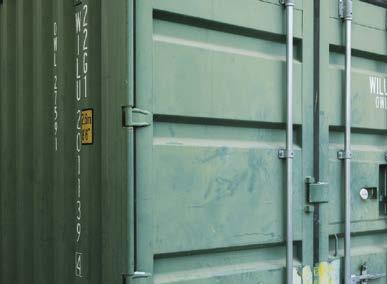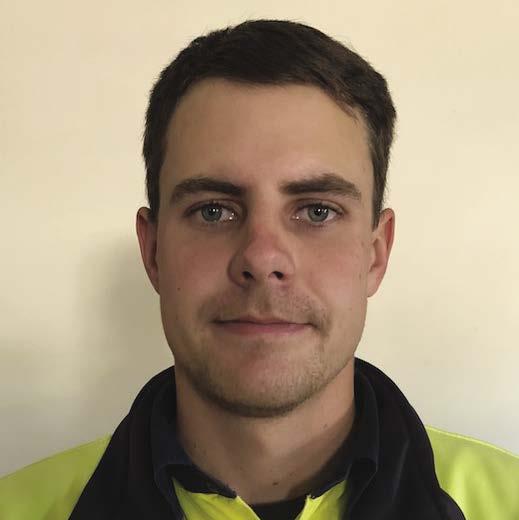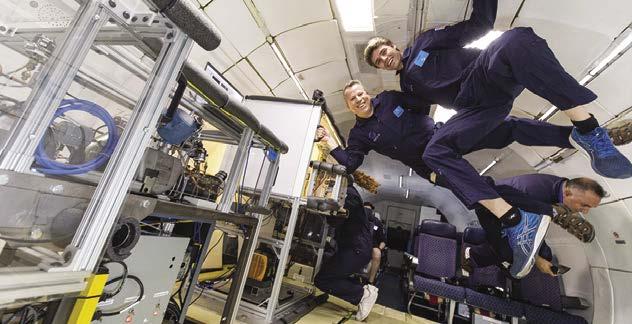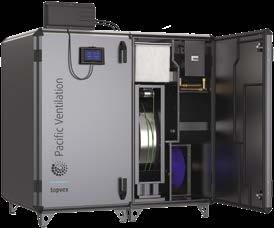Global Update
USA
IRELAND
REACH FOR THE STARS
HFC-FREE AC?
Led by Purdue University, a team of engineers is collaborating to build an outerspace-ready refrigerator that works in zero gravity – and upside down.
A small Irish company has developed a new type of air conditioning system that could negate the need for hydrofluorocarbons (HFCs).
The team, which includes Whirlpool Corporation, recently ran tests on their fridge design at the Zero Gravity Corporation’s (ZERO-G) weightless research lab. The unique testing centre allows testing in microgravity, onboard a specially designed plane.
Researchers at Exergyn worked in collaboration with another company – thought to be Carrier – for two years on the project. The system uses a shape-memory alloy (SMA) called nitinol, which is a blend of nickel and titanium. SMAs are alloys that can be deformed in low temperatures, but return to their original shape when heated.
Roughly the size of a microwave, the prototype uses vapour compression refrigeration. With longer space travel to destinations such as Mars looking more likely, the capacity to store food for longer onboard spacecraft is becoming more important. “We want to have a refrigeration cycle that is resistant to zero gravity and works to normal specifications,” says Purdue School of Mechanical Engineering’s Eckhard Groll. Current astro-rations last only for a about three years. The project aims to provide astronauts with a supply of food that could last five to six years.
In the original prototype, the company created plates of the alloy with holes to allow heat-carrying liquids or gases through. The plates are assembled into stacks, which are each compressed in sequence by hydraulic rams or electric actuators. Exergyn’s Managing Director Dr Kevin O’Toole says the team operated a 60kW heat pump for two months at its test facility in Dublin without any issues. Plans are afoot for the unit to be shipped to an HVAC&R partner facility for continued testing. Other options where nitinol can be used in the HVAC&R industry, including in refrigeration, air conditioning and district heating, are being explored. ■
Data from the tests suggests the prototype can operate successfully in microgravity. ■
NETHERLANDS
INDIA
DRONING ON
INDIA TO RATIFY KIGALI
Researchers at the Delft University of Technology in the Netherlands have developed a swarm of tiny drones that can autonomously detect and localise gas sources in cluttered indoor environments. The technology has been described as a potential lifesaver in situations where leaking gas is flammable and could put firefighters at risk. It also could have applications for finding refrigerant leaks in large commercial and industrial spaces. The drones use bio-inspired navigation and search strategies. “Drones measure the PPM (parts-per-million) of the gas at their position,” says Professor Guido de Croon of TU Delft. “We use a threshold on the PPM to mark the first detection of the gas, but after that the drones communicate the PPMs to each other. “The swarm copes with this in a ‘wisdom of the crowd’ manner, by locating the gas in a collaborative fashion. When one drone senses a gas, it communicates with the others to help locate the source.” ■
8
|
HVAC&R Nation
|
www.airah.org.au/nation
|
October 2021
India has given its approval for the ratification of the Kigali Amendment to the Montreal Protocol. The move will provide a considerable boost to the Kigali Amendment, which requires countries to cut production and consumption of HFCs by more than 80 per cent over the next 30 years. Boasting a rapidly growing economy, India, along with the US and China, is one of the world’s biggest HFC emitters. India will complete its phase-down of HFCs in four steps from 2032 onwards. Cumulative reduction of 10 per cent is slated in 2032, 20 per cent in 2037, 30 per cent in 2042, and 80 per cent in 2047. The India Cooling Action Plan, which embodies the Kigali Amendment’s goals to phase down HFCs and reduce cooling demand, has been embraced by the government. Published in 2019, the action plan proposes to reduce refrigerant demand by 25 to 30 per cent by 2037, and to train and certify 100,000 servicing sector technicians by 2022–23. ■








